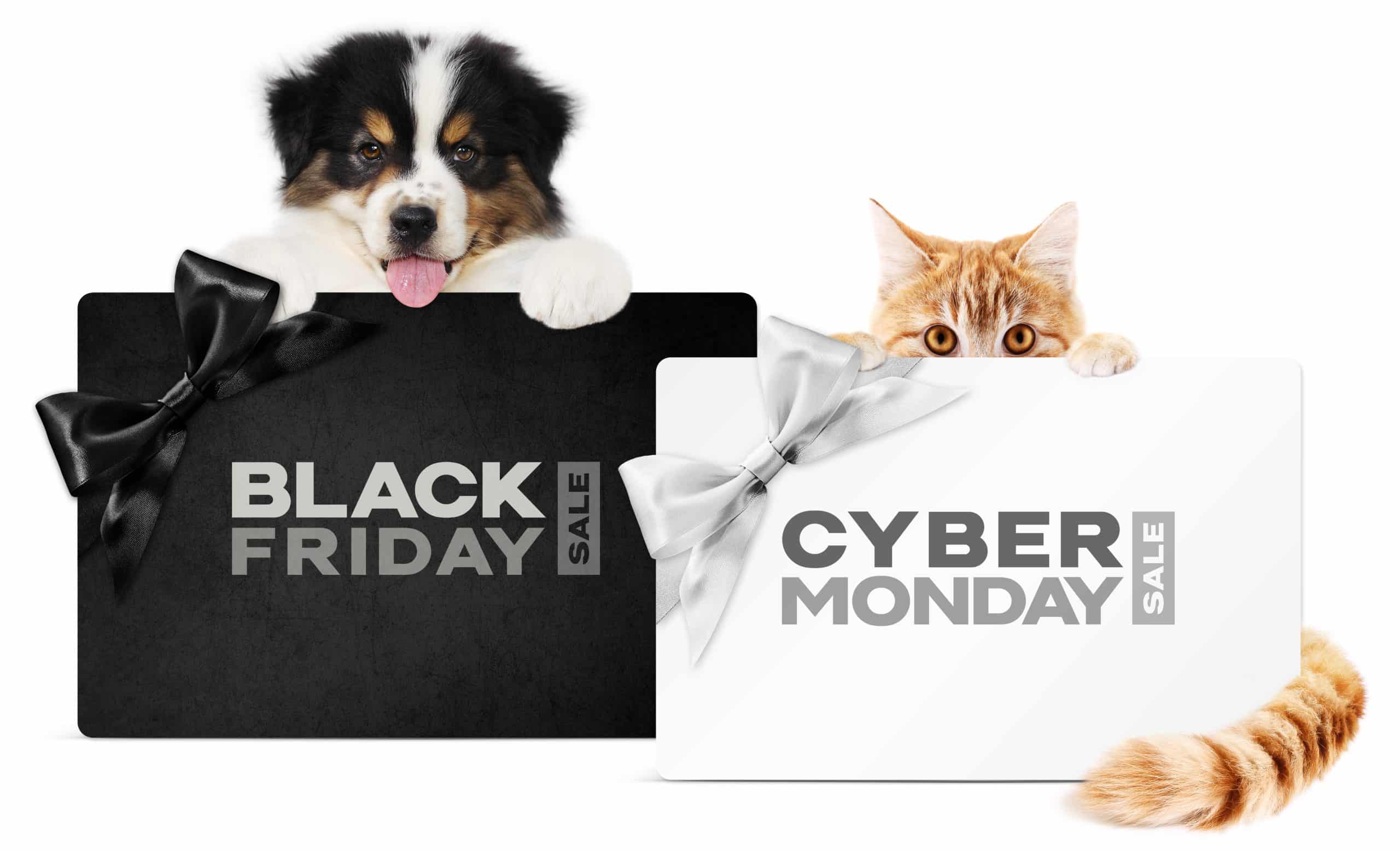For years, Black Friday and Cyber Monday have dominated the holiday shopping season. It’s critical for digital advertisers to be strategic when creating ad copy and headlines to capture attention and drive engagement during this time, so to help you prepare in 2025, we’ve analyzed previous Black Friday and Cyber Monday ad headline performance. The findings from our proprietary Realize data sheds light on various headline performance trends, both top performers and underachievers. Here, I’ll provide you with insight-based tips you can implement as you build your 2025 Cyber 5 ad copy.
Maximize Your Cyber 5 Ad Copy ROI with Realize AI
Qualitative Headline Categorization
We carefully reviewed all of the headlines in our analysis and assigned them to specific categories, based on their central persuasive technique or messaging strategy. Classifying all of the headlines into specific groups allowed us to understand which types of headlines resonated with consumers, and why certain types performed better than others. Here’s a closer look at the different headline categories used:
Direct Discount/Price-Focused (DD)
Direct discount or price-focused headlines highlight financial savings and discounts, and are one of the most widely used strategies during Black Friday and Cyber Monday. Examples, such as “Up to 70% off!” or “Save $320,” focus on the price advantage of a product and are designed to appeal to value-conscious consumers. There is power in a clear, measurable discount, especially during major shopping events like Black Friday, when people are faced with a bewildering array of offers.
Urgency/Scarcity (US)
Urgency and scarcity-driven headlines (think, “Selling out fast!”) trigger an immediate emotional response from consumers by homing in on limited-time offers or product availability. They can tap into customers’ fear of missing out, or FOMO, which can cause them to act quickly, even impulsively, to secure an excellent deal. This approach is consistently effective across Black Friday and Cyber Monday campaigns.
Product/Brand-Specific (PB)
Product or brand-specific headlines target a more intent-driven audience by directly naming a particular product. Examples could include “Dyson Black Friday Deals” or “Save on the iPhone 16.” Shoppers who respond to these types of headlines know precisely what they’re looking for and are searching for the best deal on those particular items.
Benefit-Oriented (BO)
Unlike direct-discount headlines, benefit-oriented headlines shift the focus away from just price and toward the positive impact the product can have on the consumer. Headline examples might include “Save on Energy Costs This Winter,” or “Get Salon-Quality Hair with the Dyson Airwrap.” This approach extends beyond price and appeals to consumers’ quality of life.
Problem/Solution (PS)
Problem/solution headlines are highly effective as they identify a customer pain point before presenting the product as the solution. One example is, “Hate waiting in long lines? Skip the chaos with our exclusive Black Friday online deals!” This highlights the problem of long lineups in shopping malls during Cyber 5 and presents the solution of securing great deals online from the comfort of your home. This type of headline often performs well as it appeals to customers’ immediate needs.
Curiosity/Intrigue (CI)
The goal of curiosity-driven headlines is to create surprise or pique a customer’s interest, making them want to click on the ad to learn more. Examples like “Born Before 19XX?” or “Cyber Monday is almost here — but this exclusive offer might disappear first!” create a sense of mystery and intrigue. The goal with these types of headlines is to prompt customers to click on the ad to discover the rest of the story.
According to Esther Altomare, head of industry enterprise advertising at Taboola, Curiosity/Intrigue and Problem/Solution headline styles both “drive engagement by tapping into emotional triggers and offering quick, relatable fixes. The key is balancing intrigue with clarity, making the benefit obvious while evoking just enough curiosity to prompt a click.”
Generic Sale/Event Announcement (GS)
Some headlines are more generic and simply announce a Black Friday or Cyber Monday sale without providing further details. While the purpose of these headlines is to reach a broader audience, they can be ineffective in generating clicks.
Informational/Guidance/News (IN)
Informational headlines tend to be less promotional and mainly focus on providing valuable information to consumers. Examples include “Tips for Avoiding Black Friday Scams,” or “How to Get the Best Cyber Monday Deals.” While these ads are not directly tied to a sales transaction, they still play a crucial role in influencing customer decisions during the Cyber 5 period.
Call to Action (CTA)
Headlines that feature direct calls to action are designed to get an immediate response from consumers. Phrases like “Click Here!” or “Shop Now!” are intended to drive customers to take action. CTA headlines can be effective, but they often lack a strong value proposition, which is crucial for ensuring customer follow-through.
Social Proof/Expert/Celebrity Endorsement (SP)
Using celebrity or expert endorsements in headlines helps brands establish trust and adds instant credibility to a promotion. Headlines like “Oprah’s Favorite Things on Sale,” or “Over 50 Rangefinders Tested and Approved by Experts,” are good examples of this headline style.
Which Headlines Are Cyber 5 Shoppers Most Engaged With?
We analyzed headline performance from 2024 to find out which of the headline categories listed above consistently captured customer attention during the critical Cyber 5 shopping period (the five days from Thanksgiving Day through to Cyber Monday). The data below offers a clear picture of what resonates with shoppers during these high-volume shopping events.
Note: The CTR percentages in this table are illustrative, reflecting the relative performance trends observed across the dataset’s diverse headlines and their categorized examples.
Average Click-Through Rate (CTR) by Headline Category (2024-2025 Illustrative Data) for Black Friday
| Headline Category | Average CTR (%) |
| Curiosity/Intrigue (CI) | 10.00% |
| Problem/Solution (PS) | 9.00% |
| Call to Action (CTA) | 4.00% |
| Benefit-Oriented (BO) | 3.00% |
| Direct Discount (DD) | 2.00% |
| Urgency/Scarcity (US) | 1.80% |
| Product/Brand-Specific (PB) | 1.50% |
| Informational/Guidance/News (IN) | 1.50% |
| Generic Sale/Event Announcement (GS) | 0.25% |
Average Click-Through Rate (CTR) by Headline Category (2024-2025 Illustrative Data) for Cyber Monday
| Headline Category | Average CTR (%) |
| Problem/Solution/Benefit-Oriented | 1.85% |
| Explicit Discount/Savings | 1.72% |
| Urgency/Scarcity | 1.68% |
| Product/Category Specificity | 1.55% |
| Social Proof/Expert/Celebrity Endorsement | 1.48% |
Top Performers and Implications
The strength of “Curiosity/Intrigue (CI)” and “Problem/Solution” headlines over the Cyber 5 period demonstrates the importance of connecting a product to a direct customer need or desire. These headlines address more than just product features — they highlight the value proposition in a way consumers can relate to.
“Urgency/Scarcity (US)” headlines also performed well over the Cyber 5 period, but their widespread use in Black Friday advertising may lead to diminishing returns. Try headlines that provoke a strong emotional response and reinforce the primary customer intent: Find a great deal and act before it’s gone!
“Direct Discount (DD)” headlines are seen to successfully capture a Cyber Monday shopping crowd who are approaching the day with clear shopping intent, and specific product/service purchases in mind. With this in mind, marketers in 2025 should perform an in-depth analysis of their products, identifying high-demand products and creating specific, keyword-rich headlines for them.
The inclusion of Social Proof/Expert/Celebrity Endorsement in the top Cyber Monday performers, meanwhile, highlights the ongoing power of external validation in influencing consumer decisions, leveraging trust and aspirational marketing to differentiate ad copy.
Under-Performers and Implications
“Generic Sale/Event Announcement (GS)” headlines were significant underperformers, with a CTR of only 0.25% in our analysis. While these broad headlines, such as “Early Black Friday Deals,” serve a purpose, they don’t generate clicks as effectively as more targeted ones. They may get high numbers of impressions, but they aren’t translating to high CTRs.
If you’re looking for maximum exposure, you may achieve the reach you’re looking for with generic headlines, but without a compelling hook, your audience will remain unengaged. This only underscores the need for more targeted and persuasive headline messaging.
Consistencies
Certain headline categories remain consistent performers (or underperformers) throughout the Cyber 5 sales events. “Curiosity/Intrigue (CI)” and “Problem/Solution (PS)” headlines drive the highest CTRs, while generic headlines could have more impressions, but less clicks (therefore, a lower CTR). “Direct Discount (DD)” and “Urgency/Scarcity (US)” headlines consistently perform well on both Black Friday and Cyber Monday, proving that urgency-based language is crucial for driving customers to take immediate action. Because of this, consider using time-sensitive and scarcity-driven language, including phrases such as “last chance,” “final hours,” “won’t last long,” and “expiring soon.” These keywords create FOMO, which causes consumers to convert quickly, provided you don’t overdo it.
6 Cyber 5 Ad Copy Trends from Realize Data
1. Emergence of Narrative
Since 2023, Curiosity/Intrigue (CI) and Problem/Solution (PS) headlines have become more prominent and effective, suggesting a change in consumer behavior. Shoppers want more than just rock-bottom prices: More than ever, they are being drawn to headlines that tell compelling stories and directly address their needs. This is critical for marketers, as the Cyber 5 market is becoming more competitive every year. Yes, direct discount headlines are still effective, but they’re so common that they don’t stand out like they used to.
“Discount headlines still work, but brands need to layer in storytelling, assurance, and personalization to win attention,” Altomare reiterates. This focus on narrative-driven or curiosity-led headlines appeals to consumers’ deeper psychological motivators, moving beyond price as the sole selling feature.
2. Celebrity/Influencer Integration
More advertisers are using celebrity names (or celebrity claims) in their headlines. For example, you’ll often see references to stars like Oprah, Taylor Swift, or Martha Stewart. “Influencer headlines work best in fashion, wellness, tech, and lifestyle, especially when they highlight relatability or social proof,” says Altomare. “Effective headlines name-drop strategically and tie the endorsement to clear benefits or popularity metrics.” They can also differentiate your ad in a crowded market.
3. Problem-Solution Framing
Headlines that clearly define a problem and identify the product as a solution are generating higher CTRs. For example, a headline like “This tiny dongle fixes the biggest problem with Kindles,” or “This video doorbell cured my insomnia,” builds empathy into the ad and addresses shoppers’ pain points, making it more likely to resonate with them.
4. Niche Audience Targeting
With increasingly sophisticated AI tools at their disposal, along with real-time data, brands can create headlines for highly specific groups — for example, “Cyber Monday Steals for Seniors.” It’s a hyper-personalized approach that increases ad relevance because it speaks directly to particular customer groups.
5. Product Category Evolution
While electronic items such as laptops, smartphones, big screen TVs, and gaming consoles remain a Cyber 5 pillar, deals are expanding into other product categories as well. This includes lifestyle products like fashion, beauty, and home decor, and home improvement items, such as robot vacuums, smart lighting, and curtains. The deep discounts also apply to services like flights, streaming, mortgages, and office software. It’s a strong indication that in 2025, Cyber 5 will appeal to a much broader range of shoppers.
6. Cross-Promotional with Black Friday (BFCM Continuum)
Many Cyber 5 headlines now directly link Cyber Monday to Black Friday. For example, phrases like “Black Friday Cyber Monday Sale,” or “Still on sale after Cyber Monday,” frame Cyber Monday as a “second chance” to take advantage of deals that may have been missed on Black Friday. This helps brands maintain momentum throughout the Cyber 5 period. It’s also important to note that Black Friday is also stretching in the other direction, with so many “early Black Friday sales” happening that the actual Friday itself is now just a part of the wider event.
Strategic Implications
Blending of Persuasive Headline Elements
Our analysis indicates that brands can no longer rely solely on a single approach to Black Friday and Cyber Monday headlines. In fact, the best-performing headlines incorporate multiple persuasive elements. To achieve this, consider framing Product-Brand Specific (PB) and Benefit-Oriented (BO) headlines with Curiosity-Intrigue (CI) and Problem-Solution (PS) messaging. Remember, too, that while Direct Discount (DD) messaging is still effective, it works best when you combine it with these other elements.
Evolving Consumer Behavior
Customers have become more sophisticated and selective in how they respond to Cyber 5 advertising. This means that they are less likely to engage with generic headlines, as evidenced by the category’s low CTRs. Consumers want you to tell a story, spark their curiosity, or address a clear pain point. These types of headlines are outperforming those that solely focus on price.
“Early Black Friday”
As is the case with other shopping seasons, early promotions have extended the sales window leading up to Black Friday. Still, it’s not as simple as just slapping “Early” on the beginning of your headline: You need to create a clear value proposition explaining why consumers should buy in advance, rather than waiting until the actual Cyber 5 period.
Actionable Recommendations
Adopt Hybrid Headline Architectures
Focus on creating hybrid headlines that combine multiple elements into a single message. This could include Product-Specific aspects with a strong Benefit-Oriented message, and then layered with some Urgency/Scarcity or Curiosity/Intrigue. For example, you could transform a generic “Dyson Black Friday Sale” headline into “Dyson Airwrap: Achieve Salon-Quality Hair at Home — Limited Black Friday Stock!” As you can see, the amended headline is product-specific, yet it also effectively highlights the product’s benefits and creates a sense of urgency.
Embrace Narrative and Problem/Solution Framing
Incorporating narrative and problem-solving framing should be a priority, especially when promoting high-value products or unique offers. Headlines that ask a question, reveal an unexpected feature, or address a pain point tend to create curiosity and build a stronger connection with shoppers. For example, a security company could replace a straightforward “Black Friday Security Camera Deals” headline with something like, “Worried About Home Security? This Black Friday Deal Makes Advanced Protection Affordable!” The amended headline shifts the focus away from the product by addressing a customer concern with an affordable solution.
Prioritize Explicit Value Proposition
For years, clear and explicit value propositions have been key to Cyber 5 success, and that hasn’t changed. Headlines that highlight a specific discount, whether it’s a percentage off, a dollar amount, or a “lowest price ever” claim, consistently perform well with budget-conscious consumers. That said, this strategy is most effective when direct discount headlines are paired with product-specific elements for high-intent audiences. One good example: “Save $320 on Microsoft Surface Pro 11 — Early Black Friday Price!”
Maintain and Refine Urgency Messaging
As I’ve highlighted in previous headline examples, you can use specific keywords to create a sense of urgency with shoppers. For example, terms like “last chance,” “final hours,” and “limited stock” all tap into customers’ sense of FOMO, compelling them to make a purchase quickly. You can also create urgency throughout in Cyber 5, with “early access” language and, at the end, with “last chance” messaging. However, don’t overdo the urgency narrative. As Altomare cautions, “Treat urgency like spice: It’s effective in moderation, but too much can cause users to tune out or distrust the message.”
Integrate Consultative and Value-Added Content
One emerging trend is a shift toward providing value before price. You can accomplish this by offering advice or highlighting complementary products in your content. For example, “Buying a monitor on Cyber Monday? You’ll need these 10 accessories, too,” positions you as a helpful authority. It may also increase your average order value (AOV) if people purchase additional products based on your recommendations.
Harness Social Proof and Aspirational Marketing
Social proof remains an effective headline strategy, especially in niches such as lifestyle, beauty, and some tech categories. If you can include celebrity endorsements or expert recommendations in your headlines, you can build instant credibility and drive engagement.
Strategic Positioning within the BFCM Continuum
When positioning headlines, be mindful of the entire Cyber 5 period. For example, frame Cyber Monday as the last chance to secure deals that were missed on Black Friday. This can help you capture last-minute shoppers and continue momentum throughout Cyber 5.
Key Takeaways
This analysis of previous Black Friday and Cyber Monday headlines reveals that to be successful this Cyber 5, marketers must employ a strategic mix of headline categories to ensure their ad creative connects with consumers on a deeper level. Gone are the days when you could rely on generic headlines or solely focus on discounted pricing.
According to Taboola data, curiosity-driven, problem-solving, and even urgency-based headlines are consistently outperforming other categories. Also, as Cyber 5 continues to evolve, you can adapt by following emerging headline trends, such as the integration of storytelling and a greater focus on value. Finally, look for opportunities to leverage social proof and timely messaging to drive clicks and conversions during one of the busiest shopping seasons of the year.



